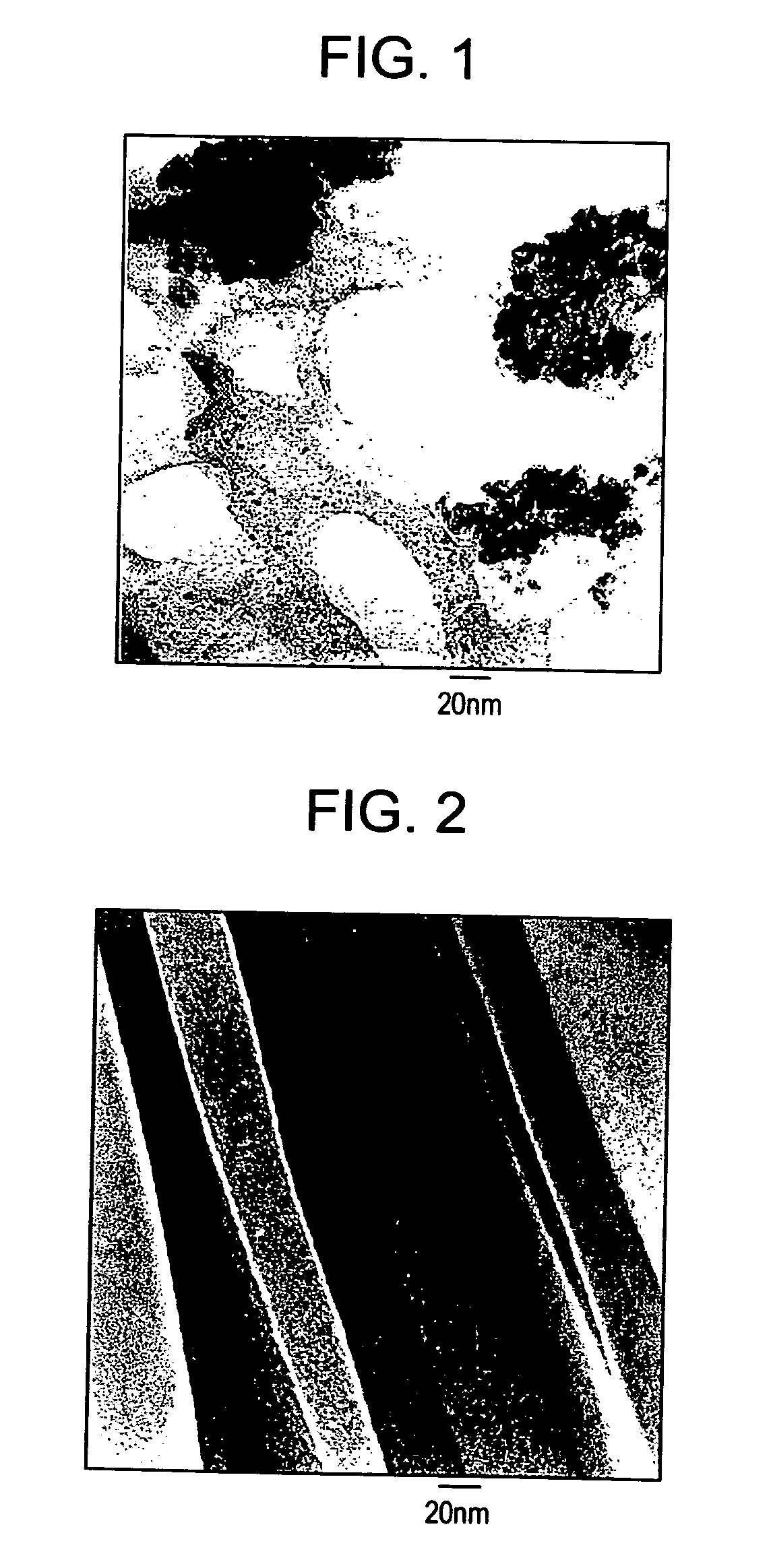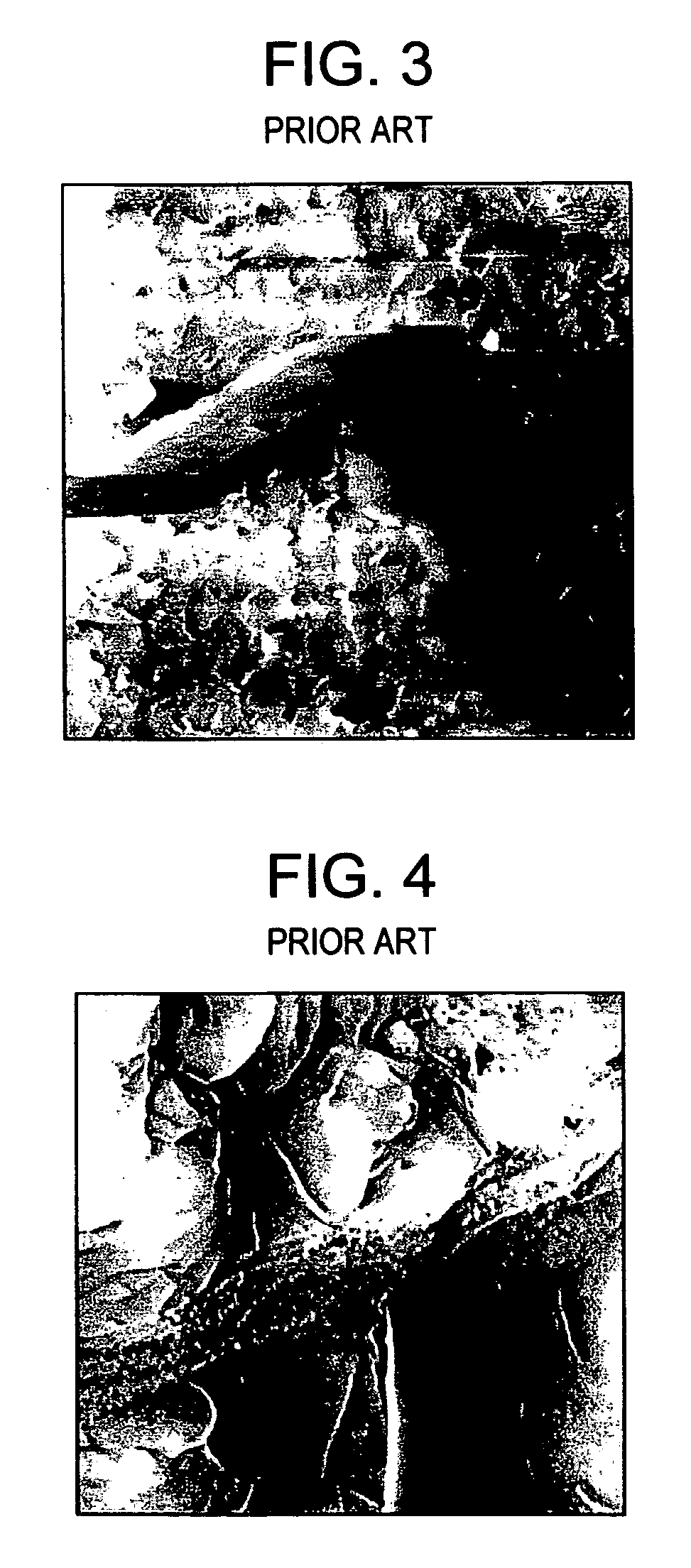Alignment of carbon nanotubes using magnetic particles
a technology of magnetic particles and carbon nanotubes, which is applied in the direction of hydrocarbon oil refining, electrostatic separation, electric/magnetic means, etc., can solve the problems of uneconomical industrial applications, high cost of process, and inability to produce well-dispersed carbon nanotubes in a polymer
- Summary
- Abstract
- Description
- Claims
- Application Information
AI Technical Summary
Benefits of technology
Problems solved by technology
Method used
Image
Examples
example 1
Preparation of Single Wall Nanotubes-Magnetite Composite
[0049] Iron oxide was prepared by a conventional coprecipitation procedure. Ferrous chloride and ferric chloride were added in 2:1 molar proportion and precipitated by 10 M NaOH solution. The iron oxide precipitate was sonicated. The size range of the particles was 6 nm to 30 nm. Then, 0.10 mg of single wall nanotubes (“SWNTs”) (obtained from Carbon Nanotechnologies, Inc., Houston, Tex.) was dispersed in methanol by ultrasonication. The magnetite precipitate in alkaline medium was added to the SWNT dispersion, and the resulting mixture was thoroughly stirred. A SWNT-magnetite composite was formed almost immediately, with the strong adsorption capacity of the SWNTs promoting the attachment of the magnetite particles to the SWNTs. The composite was attracted by 0.5 T magnets. No attraction of the nanotubes towards magnets was observed for nanotubes without adsorbed magnetic particles.
example 2
Preparation of Polymer Composite Comprising Single Wall Nanotubes and Magnetite
[0050] The SWNT-magnetite composite from Example 1 was mixed with a commercially available epoxy resin (PR 2032) and then further crosslinked with a hardener (PH 3660) at room temperature. The resin and hardener were mixed at a ratio of 3:1.
[0051] In a first sample, 12 mL of the resin / hardener mixture was thoroughly mixed with 1 mL of the SWNT-magnetite composite dispersion and placed into a 4 mL standard plastic cuvette with a lid. The mixture was allowed to set for 24 hours, forming a first solid polymeric composite block. The block was release by breaking the cuvette.
[0052] In a second sample, 12 mL of the resin / hardener mixture was thoroughly mixed with 1 mL of the SWNT-magnetite composite dispersion and placed into a 4 mL standard plastic cuvette with a lid. The cuvette was placed between two 0.5 T square-shaped, permanent magnets to align the SWNTs, and the mixture was allowed to set for 24 hours...
PUM
| Property | Measurement | Unit |
|---|---|---|
| Fraction | aaaaa | aaaaa |
| Fraction | aaaaa | aaaaa |
| Temperature | aaaaa | aaaaa |
Abstract
Description
Claims
Application Information
 Login to View More
Login to View More - R&D
- Intellectual Property
- Life Sciences
- Materials
- Tech Scout
- Unparalleled Data Quality
- Higher Quality Content
- 60% Fewer Hallucinations
Browse by: Latest US Patents, China's latest patents, Technical Efficacy Thesaurus, Application Domain, Technology Topic, Popular Technical Reports.
© 2025 PatSnap. All rights reserved.Legal|Privacy policy|Modern Slavery Act Transparency Statement|Sitemap|About US| Contact US: help@patsnap.com


